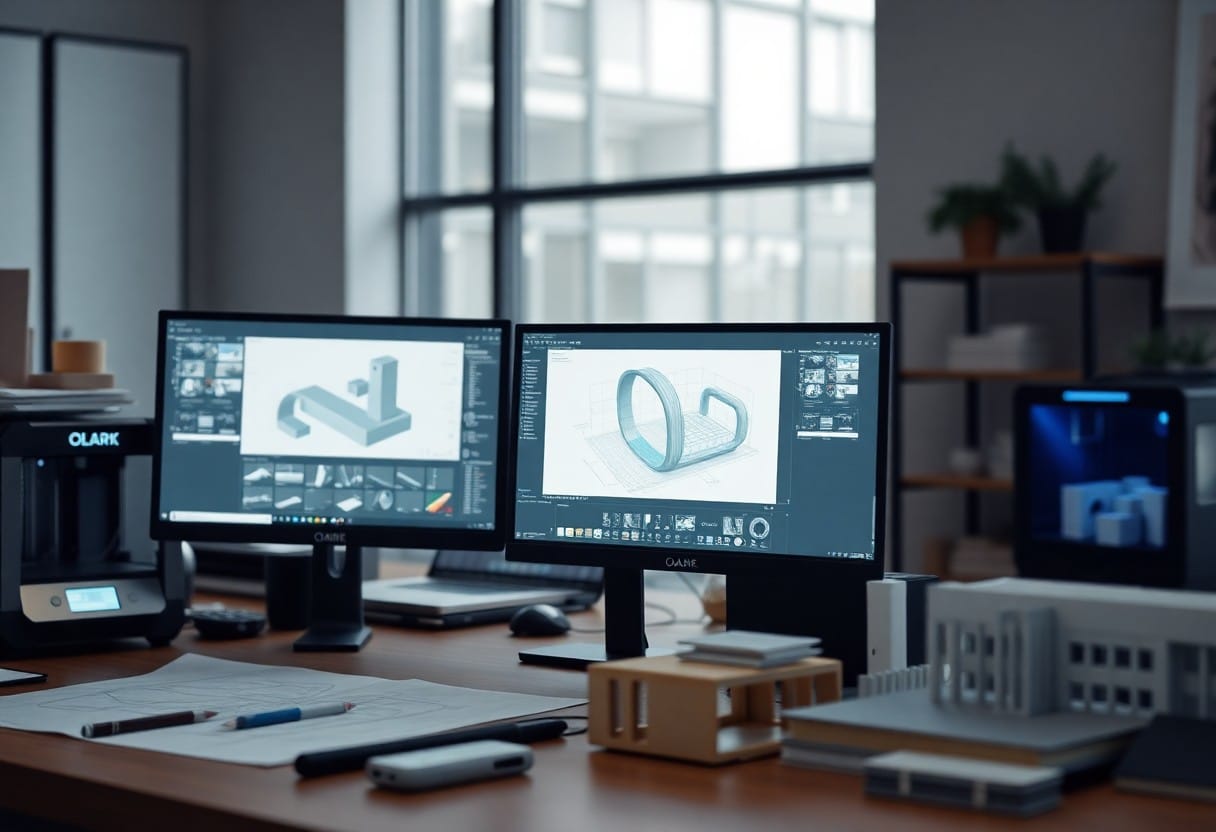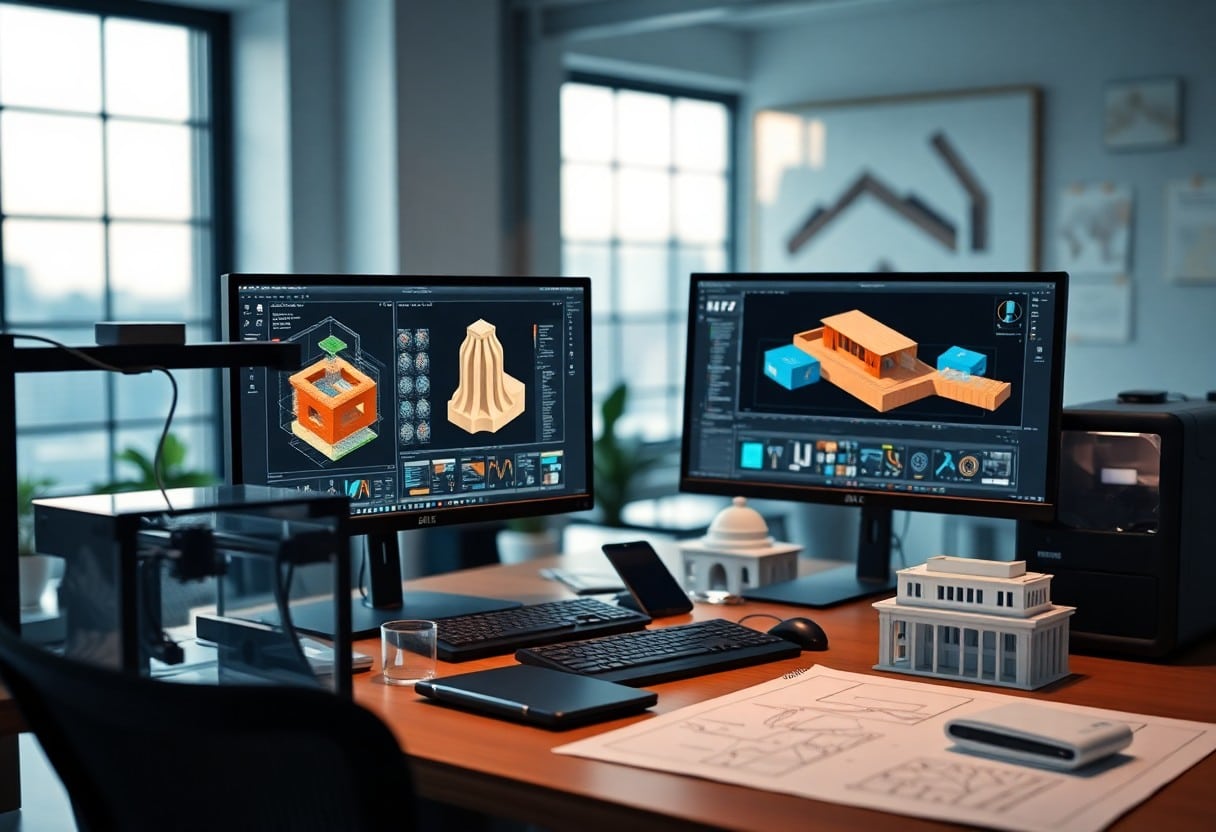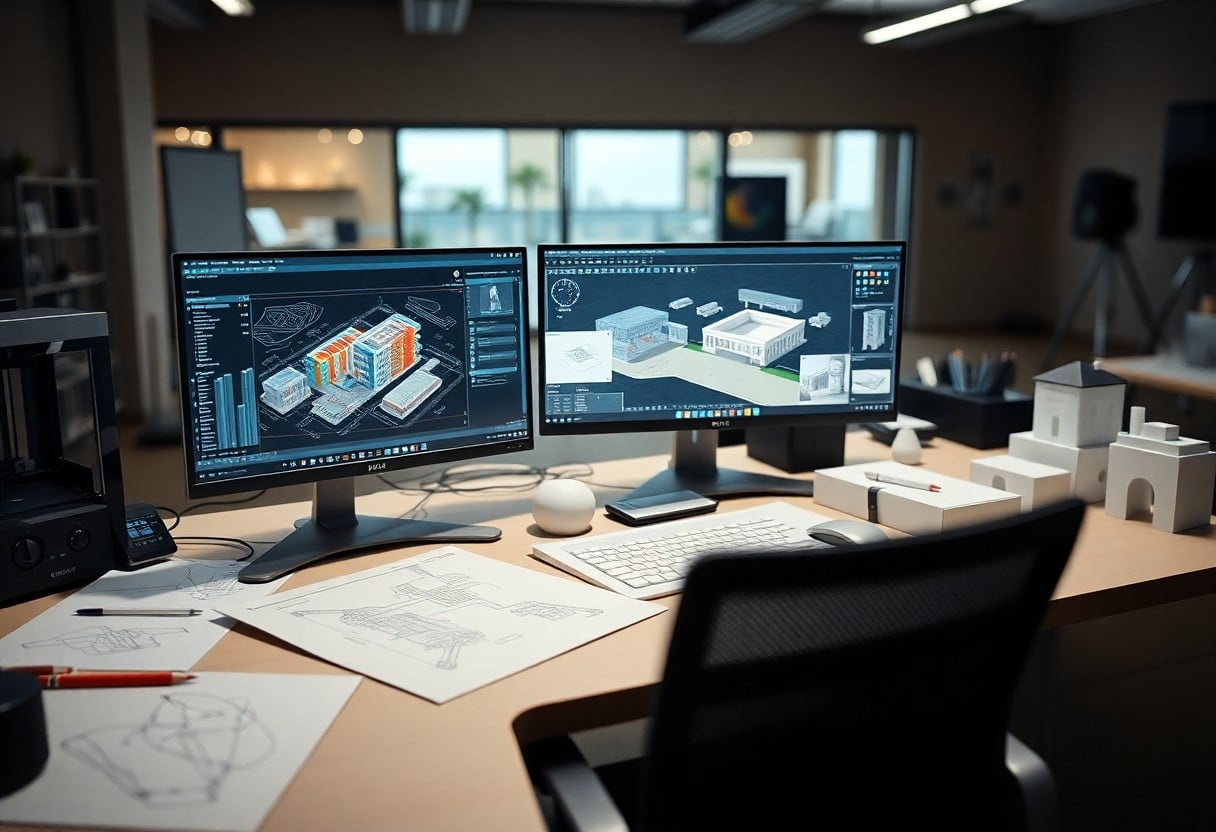Transform Your Ideas - Steps to Effectively Use CAD Tools for Amazing Designs
In today's digital age.Computer Aided Design (CAD) Toolsgives you unlimited possibilities to transform your ideas into amazing designs. With these tools.You can efficiently plan and visualize theYour creativity not only improves the accuracy of your design, but also sets you apart from the rest of the market. In this article, we'll guide you through the process of utilizing CAD tools to help you achieve optimal performance and results in your design process. Get ready to transform your ideas and let's explore these key steps together!

Key Points:
- Mastery of basic tools: Understanding the basic functions and interfaces of CAD tools is the first step to efficient design.
- Developing a clear plan: Create specific plans and goals before starting the design to increase efficiency.
- Utilization Templates: Utilizing off-the-shelf design templates saves time and improves design consistency.
- Utilizing Layers: Proper use of layers can make the design process more organized and manageable.
- Regular re-inspection: Review and modify the design at any time to maintain flexibility for optimal results.
- Learning Shortcuts: Familiar with the shortcut keys of CAD tools, which can significantly improve the operation speed and work efficiency.
- Participate in training and learning communities: Join relevant training programs or communities to continuously improve skills and gain new knowledge.

Understanding CAD tools
In today's design world.CAD toolsThese tools are becoming more and more popular, and they can help you quickly and accurately transform concepts into visual designs. By understanding the basics of how these tools work, you'll be able to utilize them more effectively to enhance your creative process. By learning how to use them, you'll not only be more productive, but you'll also be able to create more engaging work.
CAD Software Type
VariousCAD SoftwareDifferent functions and application areas are available. It is important to choose the right tool for your needs. The following are common types of CAD software:
- 2D Design Software
- 3D Modeling Software
- Engineering Design Software
- Mechanical Design Tools
- Architectural Design Software
Each of these tools has its own characteristics and can be selected according to your needs.
Key Features Considered
In choosing the rightCAD toolsThere are a few key features that you should consider. These features not only affect the user experience, but also have a direct impact on the final result of the design. Here are some of the features to consider:
- User Friendly
- consistency
- Functional Diversity
- Technical Support
- Price
These characteristics will influence your decision to select a CAD tool.
Consider these characteristics to help you find the best fit for your needs.CAD Software. First.User FriendlyEnsure that you can get started quickly; and secondly.compatibilityEnsure that your design integrates seamlessly with other applications, thenFunctional DiversityThis will meet your different design needs. In addition, having a goodTechnical SupportIt means that you will not be at a loss when you encounter a problem, and finally, it is reasonable for you to be aware that you are not at a loss when you encounter a problem.PriceThe key is to ensure cost-effectiveness. These are all factors that you should pay close attention to when choosing a CAD tool.
Plan your design
Before starting the designIn-depth planning is crucialYou need to understand your goals, budget, and time constraints. You need to understand your goals, budget, and time constraints so that you can effectively utilize CAD tools to realize your ideas. Clear direction and structure in the process will make your design work more efficient and ultimately lead to amazing results.
Conceptual Development
During the concept development stage, you should focus on letting your imagination run wild and exploring the possibilities. Be open to new ideas without sticking to traditionsThis is the cornerstone of truly innovative design. This process can help you capture the essence of your ideas through sketches, references and inspiration boards.
Design Briefing
Creating a design brief is a crucial step as it helps you to clearly summarize your ideas and requirements. The presentation serves as a bridge between you and any interested parties.Clearly identify desired goals, styles, and functional needsThe
There are a number of key elements you need to consider when writing a design brief. Including information on the background of the project, key objectives, budgetary scope and timeline.A comprehensive and detailed presentation keeps all participants on the same page.Remember to include your sources of inspiration, color choices and other visual elements. Also, remember to include your sources of inspiration, color choices and other visual elements that will help realize your vision and provide clear guidance during the design process.
Mastering CAD Techniques
In the field of designMastering CAD Techniques is the key to success. By understanding and applying these techniques, you'll be able to create stunning designs more efficiently. Explore the capabilities of various CAD software and utilize the How does using RAW format in drone photography benefit post-production?This will help you break new ground in design.
Essential Tools and Instructions
To use CAD software effectively, understanding theEssential ToolsanddirectivesIt's important. Mastery of these basic components will greatly improve the accuracy and efficiency of your design, avoiding unnecessary errors and duplication of work. Detailed information on these tools can be found in the official guides or in the literature, but familiarizing yourself with the basics is the first step.
Tips to enhance your workflow
To facilitate a more efficient workflow, you can implement the following tips:
- utilizationtemplatesTo improve design consistency
- SettingShortcut Keysto speed up operation
- RegularFile Managementto stay organized
- utilizationManagementConducting Clear Vision Promotion Collaboration
Knowing these tips can make your design work more fluid and efficient.
Utilizing techniques to enhance your workflow is the key to success. In addition to the above methods, you may also want to consider creating aDaily Checklistto ensure that work does not get off track. By engaging with coworkers inRegular meetingsThe team's progress can be reviewed together, and it's a great way to improve team efficiency.
- SettingMilestonesto stay focused
- ImplementationTime Managementto improve productivity
- Continuous enhancement of design skills to improve competitiveness
Recognizing these methods will greatly enhance your strengths in the field of design.

Application Design Principles
In the design process, the application ofBasic Design PrinciplesThese principles include contrast, symmetry, center of gravity, and balance. These principles, which include contrast, symmetry, center of gravity, and balance, can help you enhance the professionalism and visual appeal of your designs. Incorporating these principles effectively not only makes your work more aesthetically pleasing, but also makes it more efficient when using CAD tools.
Color Theory and Aesthetics
Color theory is an important aspect of design that not only affects the viewer's first impression, but also guides their emotional response. UnderstandingColor InteractionThe psychological impact of color and how it is used can make your work visually appealing. By applying the principles of color, you can create visually appealing designs.
Proportions and Composition
In any designProportions and CompositionIt plays an important role. Good proportions enhance visual balance and allow the viewer's eye to move fluidly through the design. Effective composition is the art of combining these elements to ensure that important information is conveyed clearly. Whether you're choosing graphics, text, or colors, you must be aware of their interrelationships. This is accomplished by using techniques such asGold Ratiorespond in singingThe One-Third RuleWith techniques like these, you can create compelling and harmonious designs that stand out from the crowd.
Test and refine your design
During the design process, theTesting and RefinementThis is a critical step. You should evaluate your design regularly to ensure that it meets expectations. By utilizing CAD tools for simulation and prototyping, and then making adjustments on an ongoing basis, you will be able to create more beautiful work after detailed testing. If you'd like to learn how to become proficient at CAD drawing, seeWhat local laws and regulations should you know to operate a drone safely?
Prototyping and Simulation
proceedPrototyping and modelingIt is an important step in the realization of your design ideas, which not only helps you visualize your proposed concepts, but also allows you to identify potential problems. With CAD tools, you can create virtual models, conduct experiments, and optimize your design to ensure the feasibility and aesthetics of the final product.
Collecting feedback
Collecting feedbackIt is important to further refine your design. Feedback from colleagues, clients and other designers can help you see unrecognized weaknesses in your design. Through communication, you can gain valuable insights that can improve the quality and satisfaction of the final design.
To effectively gather feedback, you might consider organizing jury sessions or small presentations where different stakeholders can review your design. Keeping an open mind and accepting criticismThe feedback you receive is analyzed in-depth and helps you make adjustments and improvements to your design. Through continuous feedback and iteration, you will be able to achieve an aesthetically pleasing design that meets both functional requirements and aesthetics.
Finalize your design
After you have completed all the details of the design, theMake sure all the elements are in harmony.It is very important. You may refer to this articleHow can GPS capabilities make your drone navigation easier and safer?If you're not sure what you're looking for, you can get some inspiration and suggestions. The finalization process should also include quality checks to ensure that each component fits your design concept.
Preparing for Presentations
Before preparing your presentation, you need to gather all the necessary information and materials in order to clearly communicate your design concept. Ensure your presentation is concise and organizedand use visual aids to enhance results. Effective preparation will help boost your confidence and persuasive power.
Export and Share Format
When you are ready to share your design, choosing the right export format is crucial. Different formats are suitable for different needs, such as PDF, DWG or JPG, each with its own specific advantages and disadvantages. Ensure that the format you choose retains the quality of the designIt is also easy for the recipient to view and modify.
In addition, using the correct export format will not only affect the presentation of the design.It also affects the effectiveness of communication with your team or customers.For example, PDF format is great for sharing final drafts. For example, the PDF format is great for sharing final drafts, while the DWG format facilitates further editing by other designers. Understanding the advantages and disadvantages of each format and making an informed choice based on your needs can greatly improve your productivity.
Transform Your Ideas - Steps to Effectively Use CAD Tools to Create Stunning Designs
In conclusion, understanding how to utilize CAD tools wisely will have a significant impact on your design process. By mastering the basics, utilizing shortcuts, and integrating efficient workflows, you'll be able to turn ideas into actual designs faster. Remember to review and adjust your skills on a regular basis so that you can continue to improve the quality and efficiency of your designs and ultimately create impressive results.
Frequently Asked Questions
Q: What are CAD tools?
A: CAD (Computer Aided Design) tools are software used to create precise drawings that designers can utilize to design products, buildings, mechanical components, and more. These tools provide efficient drawing and modeling capabilities to help users realize their ideas effectively.
Q: What is the first step in using CAD tools?
A: The first step in using a CAD tool is to identify your design needs and goals. This includes a clear definition of functionality, budget, and timeframe, and then selecting the right CAD software to fulfill those needs.
Q: How can I improve my efficiency in using CAD tools?
A: To improve your efficiency in using CAD tools, you can follow some best practices such as making full use of shortcut keys, learning to use templates and library resources, updating your software regularly, and attending relevant trainings and seminars to enhance your skills.
Q: Are CAD tools suitable for all types of designs?
A: Yes, CAD tools are suitable for a variety of design fields, including architectural design, mechanical design, electronic product design, etc. Depending on the needs of your project, you can choose CAD software that is specialized for a particular field. Depending on the needs of your project, you can choose CAD software that specializes in a particular field.
Q: How do I convert my ideas into CAD designs?
A: The process of converting ideas into CAD designs generally involves several steps: firstly, sketching by hand to materialize your ideas; secondly, modeling in CAD software based on the sketches; and finally, making adjustments and optimizations until the ideal design is achieved.
Q: What should I do after the CAD design is completed?
A: Once the CAD design is complete, you can render it, create technical drawings or generate a 3D printed model. If desired, you can also share the design with your team or client and make any necessary changes based on feedback.
Q: How can a novice learn to use CAD tools?
A: Newcomers can learn to use CAD tools by attending online courses or physical training classes, watching instructional videos, reading relevant books, using online resources, and practicing your own designs. Gradually familiarizing yourself with the functions and operations of the tools will greatly improve your learning efficiency.




